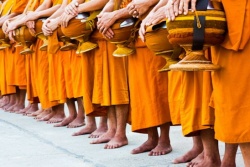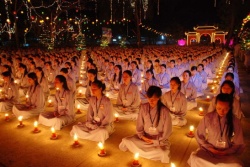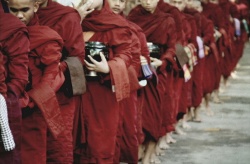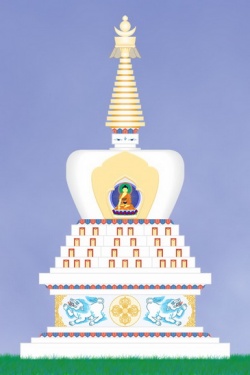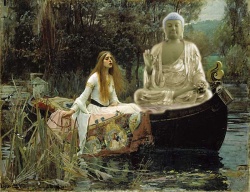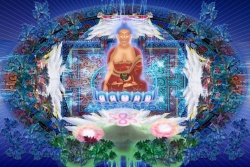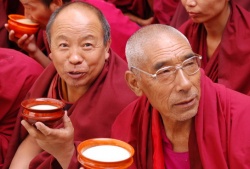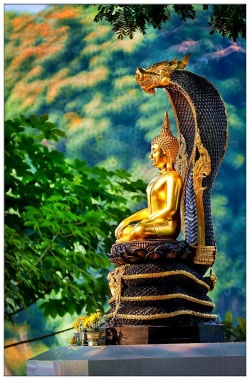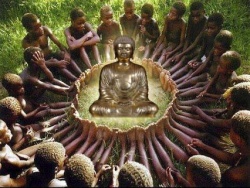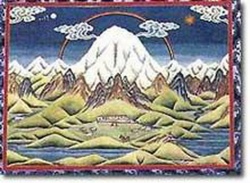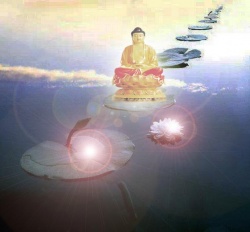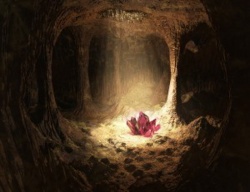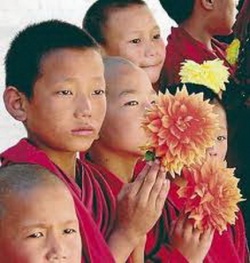Geshe Lhundub Sopa speaks about Shugden
Before delving into Geshe Sopa’s views, one will come to appreciate his views even more when we understand how eminent this master is and how much His Holiness the Dalai Lama respects him, to write such a glowing foreword and tribute to this great master.
The following is but a brief overview of Geshe Sopa’s life and achievements.
Geshe Lhundub Sopa was born in 1923 in the Shang region of Tsang province within Central Tibet.
At 9 years old, he was ordained as a novice monk and entered Gaden Chokor Monastery.
In 1941, Geshe Sopa traveled to Lhasa and enrolled into Tsangpa Khangtsen of Sera Jey Monastery, one of the three largest and most prestigious monastic institutions of Tibet.
He would be one of the last of a generation of Tibetan Buddhist masters who were educated in Tibet under the old, rigorous monastic education system of that time.
In Tibet, Geshe Sopa was already highly sought after for his erudite knowledge as a teacher.
Even before completing his own Geshe exams, he was chosen by his Monastery to be one of the 14th Dalai Lama’s debate partners during the annual Prayer Festival in 1959.
The Dalai Lama in his foreword to Geshe Sopa’s autobiography, Like A Waking Dream, mentioned this.
In this foreword, the Dalai Lama said he had known Geshe Sopa personally for over fifty years, reflecting an enduring friendship throughout this time.
Geshe Sopa would only complete his own Geshe exam in 1962 after seeking political asylum in India and in which he graduated with the highest distinction – Geshe Lharampa.
The Dalai Lama went on to place three young tulkus under his care and together with his new charges, the four of them traveled to America where they moved into a small Mongolian Gelug Monastery in Freewood Acres, New Jersey.
The young tulkus were to learn English while Geshe Sopa stayed with them for the next five years.
Then in 1967, Professor Richard Robinson invited Geshe Sopa to join the Faculty of Buddhist Studies at the University of Wisconsin-Madison, USA.
Between 1973 and 1985, Geshe Sopa was Assistant Professor of Buddhist Studies and was gradually promoted to the rank of Professor.
During his tenure, he taught Tibetan language, general courses in Buddhist philosophy and specialized in a variety of topics in Indo-Tibetan Buddhist philosophy.
He was well-known for his teachings that gave a special insight into the Mahayana philosophy of emptiness.
During this time, Geshe Sopa had the opportunity to travel and give Buddhist teachings throughout the
United States and around the world, including
Canada,
Mexico,
Italy,
England,
France,
Switzerland,
Greece,
Australia,
New Zealand,
Taiwan,
Hong Kong,
Japan,
Tibet,
India,
Nepal,
Thailand,
Costa Rica,
Venezuela and
Brazil.
During his time at the university, many students began to request private teachings outside of the lecture hall.
In order to meet this need, Geshe Sopa founded Ganden Mahayana Center in his home in Madison, Wisconsin.
In 1981, a piece of land was purchased in Oregon, Wisconsin for the purpose of hosting the Kalachakra empowerment.
This land would later become what is known today as Deer Park Buddhist Center.
The year the land was purchased, Deer Park hosted the first Kalachakra initiation to be offered in the West by the Dalai Lama.
Since then, the Dalai Lama has made five visits to Deer Park to offer scriptural commentary and initiations.
Throughout his illustrious life, Geshe Sopa had many famous students in Lhasa and India including numerous Tibetan scholars and masters like Geshe Jampa Tegchok, Geshe Lobsang Tsering and Geshe Lobsang Donyo.
These lamas would later become Abbots of Sera Jey Monastery in India.
Geshe Sopa was also the tutor of Khensur Rinpoche Lobsang Tenzin, ex-abbot of Gyume Tantric College and who is currently the Jangtse Choje – one of the highest positions within the Gelug School and is in line to be the Gaden Tripa.
Khensur Rinpoche Lobsang Tenzin is also directly in line for the Ganden Tripa position, representing the highest lineage holder of the Gelug tradition.
Geshe Sopa also had other well-known students including the famous Lama Yeshe and Lama Zopa Rinpoche.
He was also the tutor to the first generation of respected Buddhist scholars and translators in the West, including Jeffrey Hopkins, José Cabezón, John Newman, Beth Newman, Roger Jackson, John Makransky, and countless many others.
Just like what was mentioned in the Dalai Lama’s foreword, Geshe Sopa was not only a scholar but also a “teacher of scholars”.
The Dalai Lama would also go on to praise him as an eminent “Buddhist mentor and a guide to hundreds of Western students and a pure lineage holder of the monastic tradition”.
Thus, it was clear that the Dalai Lama respected Geshe Sopa and therefore endorsed this autobiography and his views contained within.
Pabongka Rinpoche: The teacher of teachers
If Geshe Sopa was a teacher of scholars, then surely his own guru was a teacher of teachers, for Geshe Sopa was a direct disciple of Kyabje Pabongka Rinpoche.
After observing Pabongka Rinpoche and receiving teachings from him for decades, Geshe Sopa did not have a single negative thing to say about his teacher.
Being a direct disciple and as someone who practised during Pabongka Rinpoche’s time, Geshe Sopa was able to give many direct observations of the greatness of Pabongka Rinpoche’s teachings and works (click here to read Geshe Sopa’s writings on Pabongka Rinpoche).
We know from Geshe Sopa’s book that Pabongka Rinpoche had a very distinct teaching style that attracted tens of thousands of students, both lay and ordained.
Amongst his ordained disciples, the majority of them came from the three great Gelug monasteries of Tibet – Gaden, Sera and Drepung – and received empowerments from Pabongka Rinpoche.
Geshe Sopa makes it clear that Pabongka Rinpoche never actually sought to convert anyone.
In fact, he notes that Pabongka Rinpoche was invited to monasteries to teach.
Thus Pabongka Rinpoche taught tirelessly only because he was requested, since there was a general decline of teachings in those areas of Tibet.
As a result of his incredible Lamrim teachings however, many people began to follow Pabongka Rinpoche of their own accord.
Geshe Sopa observed that for the monasteries who did not become Gelug, they came to uphold the Vinaya even more strongly.
Such efforts to revive Shakyamuni’s traditions however, were not appreciated by all parties.
Because Pabongka Rinpoche taught only the Gelug set of teachings, other sects viewed him as being critical of their teachings.
In response to this, Geshe Sopa likens Pabongka Rinpoche’s activities to that of Lama Atisha and Lama Tsongkhapa who emphasized ethical behaviours and adherence to monastic precepts.
In the same way, Pabongka Rinpoche’s teachings were encouraging so-called monks to return to their vows and ethical behaviours, and to stop drinking alcohol and stop doing ‘questionable things in the name of tantra’.
It seems strange to the logical mind that such encouragements are unwanted and rejected.
Geshe Sopa clarifies here that it was not Pabongka Rinpoche’s intention to reject other practices and to convert people, but Pabongka Rinpoche became a convenient scapegoat for people who were upset that they were losing their ‘old’ ways, and their students and monasteries.
After all, Pabongka Rinpoche’s rise in popularity coincided with a time when there was increased antagonism between Gelugs and members of other sects.
Thus Geshe Sopa attributes such talk and controversy to jealousy over Pabongka Rinpoche’s popularity.
This jealousy led to several attempts to kill Pabongka Rinpoche.
This jealousy also led Pabongka Rinpoche to be accused of sectarianism because he taught only the Gelug set of teachings.
Although this accusation is hypocritical and absurd, it has survived until today in the Central Tibetan Administration’s (CTA) current accusation against Pabongka Rinpoche.
Penpa Tsering for example, recently accused Pabongka Rinpoche of being sectarian.
He however, has not accused high lamas from other traditions of being sectarian.
Although lamas such as the Karmapa, Dudjom Rinpoche and Sakya Trizin only promote their lineage and teachings, and have never once promoted Tsongkhapa’s tradition, the CTA does not criticise them as being sectarian.
This is again evidence of the Tibetan leadership’s highly inconsistent application of policies, upholding something only when it is self-serving and convenient to them.
Pabongka Rinpoche, a creator of teachers, could count amongst his students luminaries and erudite scholars such as Kyabje Ling Rinpoche (the Dalai Lama’s senior tutor), Kyabje Trijang Rinpoche (the Dalai Lama’s junior tutor) and Drakri Rinpoche.
These lamas have been responsible for the spread of Tibetan Buddhism all over the world since the 1950s, thanks to their tutoring the Dalai Lama and countless other teachers.
To have students of such calibre reflects the attainments of the master and thus, for someone of Pabongka Rinpoche’s calibre to practice and promote Dorje Shugden should indicate to us the true nature of Dorje Shugden as a protector (and not a spirit, as the CTA is so fond of falsely claiming).
The Protector Issue
Geshe Sopa explicitly addresses the issues surrounding the practice of Dorje Shugden.
The language and imagery used in Pabongka Rinpoche’s texts, rather than sectarian and aggressive as often misunderstood, actually seeks to strengthen pure teachings and destroy wrong views.
The texts were composed in response to the degeneration of the monastic system in Kham, where a swift method was necessary to subdue the wild behaviour of the ‘monks’ there.
It is clear that Geshe Sopa believes Dorje Shugden practice is not sectarian in nature, as so commonly advertised by the Tibetan leadership.
According to Geshe Sopa, the Dalai Lama’s ban on Dorje Shugden is not a reflection or refutation of the validity of Dorje Shugden’s practice.
Geshe Sopa attributes His Holiness the Dalai Lama’s ban on the practice Dorje Shugden as a result of other schools being unable to perceive the practice for its actual purpose (to oppose wrong views).
Instead, they see Dorje Shugden practice as aggressively sectarian due to the language and imagery in various ritual texts.
[[Geshe Sopa’s[[ view of this situation has basis – we know from history that members of other sects have previously expressed jealousy towards Pabongka Rinpoche and accused him of being sectarian.
Thus Geshe Sopa feels the ban on Dorje Shugden practice is not a criticism of Pabongka Rinpoche or the tradition of Lama Tsongkhapa.
Instead, the Dalai Lama’s decision to instigate the ban is a method to keep peace and social harmony between traditions that have had past rivalry,
in a world where the Tibetans have lost their nation, have been displaced and are in dire need of harmony.
The facts speak for themselves – there was nothing inherently wrong with the practice until the Dalai Lama and Tibetans were displaced and forced to establish themselves in India.
Despite this obvious fact, the CTA continues unabashedly seeking to defame Pabongka Rinpoche and other Lamas as propagators of sectarian practices.
The CTA are also fond of claiming that Dorje Shugden is a minority practice, but Geshe Sopa’s autobiography soundly refutes this on Page 182 when he writes that “many Gelugpas have the propitiation of Dorje Shugden as part of their practice”.
Geshe Sopa notes that all of Pabongka Rinpoche’s students, numbering into the tens of thousands, received and practiced whatever Pabongka Rinpoche practiced.
Furthermore, lamas such as Kyabje Ling Rinpoche, Kyabje Trijang Rinpoche and Drakri Rinpoche would have received the entire corpus of teachings, knowledge and practices from their guru Pabongka Rinpoche and no doubt this transmission would have included Dorje Shugden.
It is important to recall that Geshe Sopa, being a direct disciple of Pabongka Rinpoche, arrived at this conclusion about the pervasiveness of Dorje Shugden’s practice through his direct observation of Pabongka Rinpoche’s teachings and works.
This conclusion was not formed through conjecture or assumptions, or third party information but through his experience of living, practicing, studying in the monasteries and directly under Kyabje Pabongka Rinpoche.
So from laypeople to the ordained community, tens of thousands of people would have received Dorje Shugden from Pabongka Rinpoche, thus countering the Tibetan leadership’s claims that Dorje Shugden is a minority practice.
According to Geshe Sopa, the majority of monks at Sera Mey practiced Dorje Shugden and as many high lamas from Drepung and Sera were students of Pabongka Rinpoche (and thus practice Dorje Shugden), it would follow suit that their own students would practice too.
Also worth noting is Geshe Sopa’s use of the respectful ‘Dorje Shugden’ to refer to the deity, and the lack of derogatory reference to ‘Dolgyal’.
Despite the ban on Dorje Shugden’s practice, and his outward non-reliance of the deity, Geshe Sopa had the respect for his teacher and his teacher’s decisions not to criticize Dorje Shugden by referring to him with a derogatory term.
Never once was Dorje Shugden labelled a demon or spirit in his book; Geshe Sopa instead thought to clarify the Dalai Lama’s reasons for banning the practice.
Conclusion
From Geshe Sopa’s writings, we can see that he respects Dorje Shugden as a legitimate practice that was proliferated by his guru Kyabje Pabongka Rinpoche and other high, attained Gelug lamas.
He does not share any of the usual negative views of Dorje Shugden that is prevalent today.
He has only positive things to say about Kyabje Pabongka Rinpoche, all of which are based on his own observations and the prevalent view of this great master.
Therefore, Geshe Sopa dispels the usual misconceptions of Dorje Shugden and Kyabje Pabongka Rinpoche in his writings.
One is naturally compelled to concur with Geshe Sopa’s view of Dorje Shugden and Kyabje Pabongka Rinpoche based on the fact that he is such an eminent scholar and confidante of the Dalai Lama, who provided a foreword for his autobiography.
The Dalai Lama’s foreword for this autobiography is an endorsement of the views and recollections that Geshe Sopa sets forth, including his views on Dorje Shugden which are contrary to the CTA and Tibetan leadership’s stance.
It is clear that this great scholar does not agree with the CTA’s view that Dorje Shugden is an allegedly negative spirit – on Page 180, Geshe Sopa mentions clearly that Dorje Shugden is an “exclusively Gelug dharma protector”.
This is significant for two reasons.
It is Geshe Sopa’s recognition that the practice of Dorje Shugden belongs to the Gelug set of protectors, and that Dorje Shugden is a Dharma protector and not a spirit, land god or spirit of an evil monk (as the CTA promotes him to be so).
We highly recommend that you read the whole autobiography of this illustrious master and scholar, and please read the scanned pages that we have included for you from the book.
See how such an eminent master of such renown has no ill opinion of Dorje Shugden and in fact, refers to him as a Dharma protector.
Can Geshe Sopa, the teacher and creator of scholars and debate partner of the Dalai Lama, be wrong too?
Of course not.
Kay Beswick
Source
http://www.dorjeshugden.com/all-articles/features/geshe-lhundub-sopa-speaks-about-shugden/
